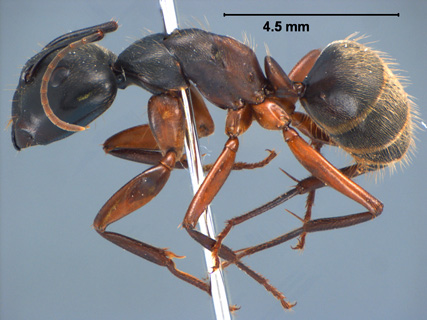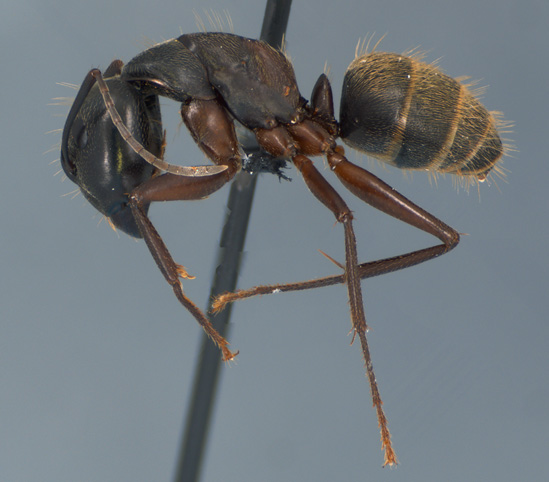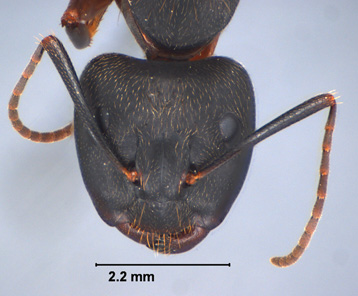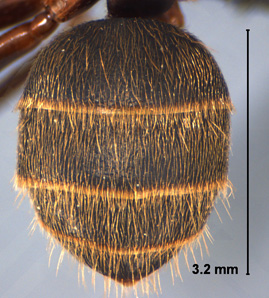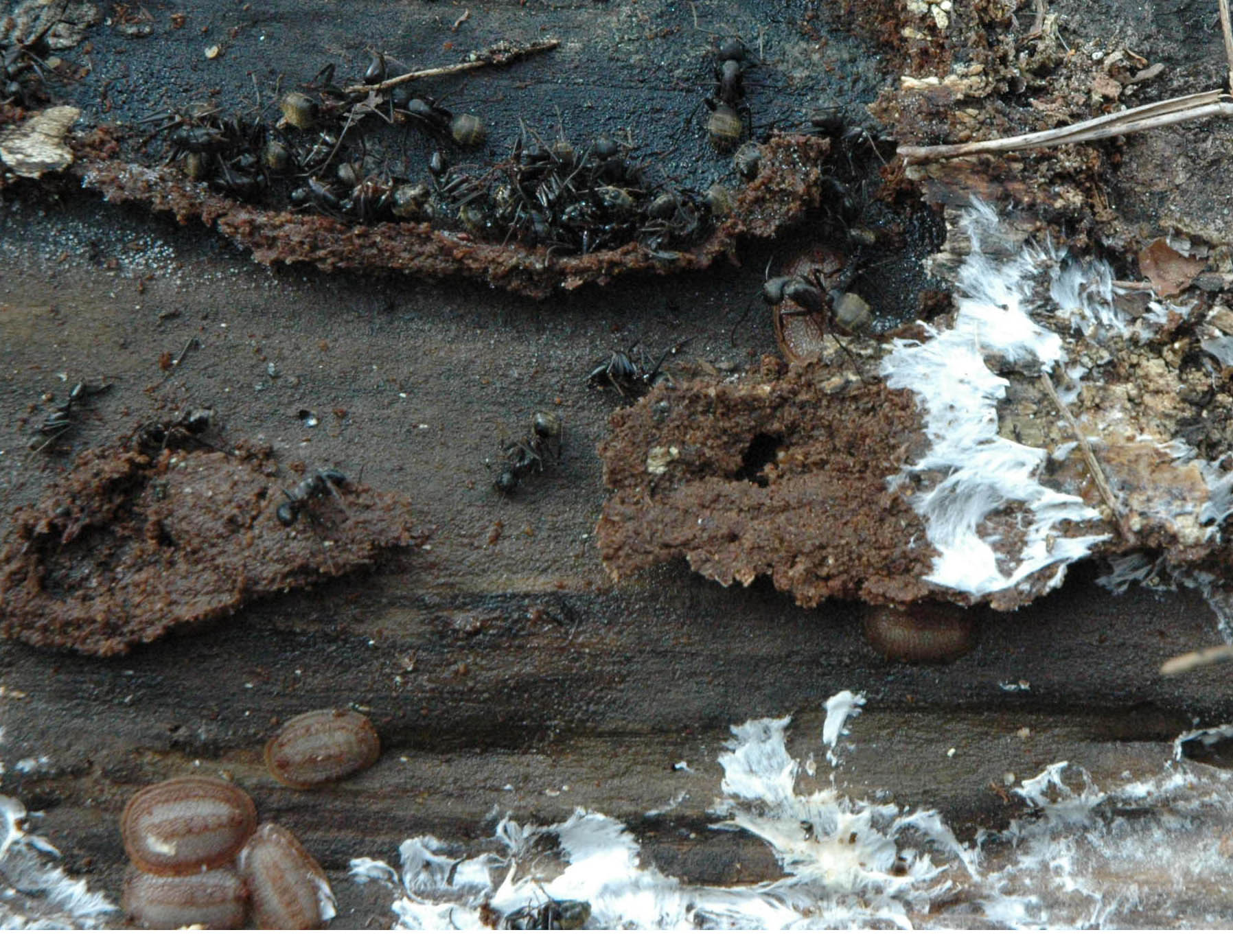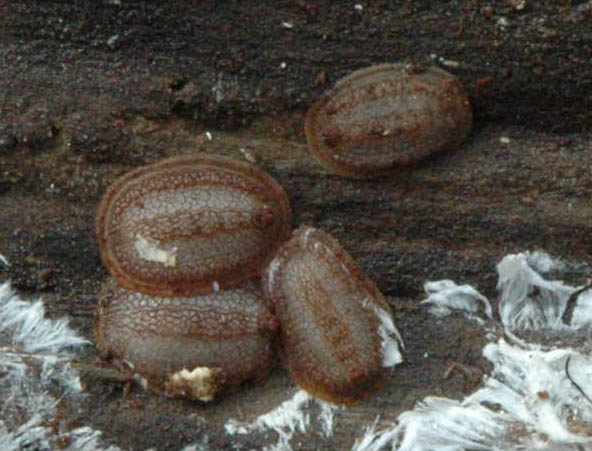|
Subfamily FORMICINAE |
|
Camponotus chromaiodes, profile view of major worker - with typical reddish coloration on propodeum, petiole and legs. (click image to enlarge). |
Camponotus chromaiodes, profile view of major worker - with coloration more similar to C. pennsylvanicus. (click image to enlarge). |
Camponotus chromaiodes, full face view of a major worker. (click image to enlarge). |
Camponotus chromaiodes, dorsal view of gaster. Note the pubescence extending well past the edges of the tergites; more than half of the length of those hairs reach the next tergite (Compare to C. pennsylvanicus gaster). (click image to enlarge). |
Camponotus chromaiodes workers under bark of a dead Pinus taeda log with Microdon sp. larvae (Syrphidae) [larvae in lower left corner]. |
Microdon sp. larvae found with C. chromaiodes in colony under bark of pine log. |
| Introduction Species in this genus are variable in size with workers ranging in size from 3 to 15 mm or more in length and queens (also referred to as females) of some species attaining a length of 19 mm or more. Many species are polymorphic. Workers have a 12-segmented antenna that lacks an apical club. Antennal fossae do not touch the posterior border of the clypeus. Ocelli are not present on the heads of workers. The workers of most species have an indistinct metanotal suture between the promesonotum and the propodeum, although this suture is present in C. sexguttatus and some members of the subgenus Colobopsis. Those species that lack the obvoius and deep metanotal suture have the shape of the alitrunk in a smoothly curved arc (as seen in profile). Camponotus chromaides is in the subgenus Camponotus, which includes some of the true carpenter ants that nest in wood. Species in this subgenus are large ants with workers ranging approximately 6-14 mm in length. The clypeus is ecarinate to only scarcely carinate, antennal scapes are not flattened at the bases, clypeal fossae are well developed, and the heads of major workers are usually broader than long. This subgenus includes three species in Mississippi. Identification Biology and Economic Importance The ant loving cricket, Myrmecophilus pergandei and Microdon sp. larvae (Syrphidae) have both been collected in C. chromaiodes colonies in this region. Distribution Literature Cited Links |
|


